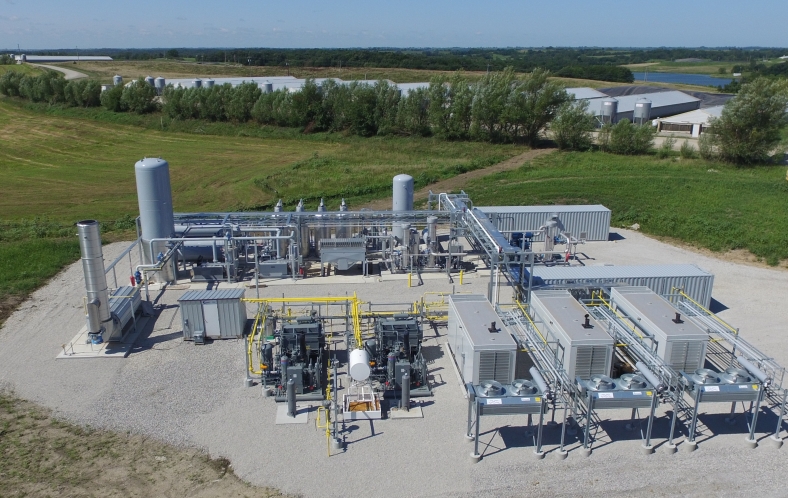Written and posted by Energy.Gov
Argonne National Laboratory (ANL) has developed technology that synergistically uses two waste biomass streams to generate two bioproducts. The technology enhances the process of anaerobic digestion of wastewater sludge by incorporating biomass-derived, carbon-sequestering char within the digester, thus creating pipeline-quality renewable natural gas while using the remaining biosolids for a high-quality fertilizer. With funding from the U.S. Department of Energy’s (DOE’s) Bioenergy Technologies Office (BETO) totaling $1.5 million over three years, researchers at ANL have been able to develop and de-risk this technology, which is now ready for scale-up.

Aerial photograph of Roeslein Alternative Energy’s Ruckman farm facility used to generate renewable natural gas from organic waste for delivery to the national pipeline. Photo courtesy of Roeslein Alternative Energy.
Biochar, charcoal derived from plant material, is created in processes such as gasification and pyrolysis, which also produce energy in the form of syngas or liquid fuels. ANL has demonstrated success using biochar from gasification of both corn stover and woody sources. Anaerobic digestion usually creates biogas that is mainly a combination of carbon dioxide (CO2) and methane, and extra steps are required to upgrade the biogas to renewable natural gas by removing the CO2 and other contaminants. Adding biochar directly to the anaerobic digester sequesters the CO2 and creates a biogas stream that is more than 90% methane and less than 5 parts per billion hydrogen sulfide, thus reducing the need for upgrading steps. The biochar also improves many of the operating conditions for anaerobic digestion, and furthermore, it is nutrient-rich, so the material left after the process is completed (called digestate) can serve as a high-quality fertilizer.
With the success of this research, ANL is preparing to scale up the technology with Roeslein Alternative Energy, a company experienced at operating large-scale digester facilities to produce renewable natural gas ecologically and economically. The company plans to perform field demonstrations during 2017 and drive the commercialization of the technology. ANL’s technology could dramatically improve the economics of anaerobic digestion projects. The reduction of upgrading steps alone could make many smaller biogas projects become profitable. The technology further reduces capital and operating expenses by improving digester conditions and producing fertilizer, which would provide even greater economic benefit.
The project at ANL is part of BETO’s work to fund research, development, and demonstration of waste to energy technologies for sustainable, cost-competitive biofuels and bioproducts from cellulosic biomass.

